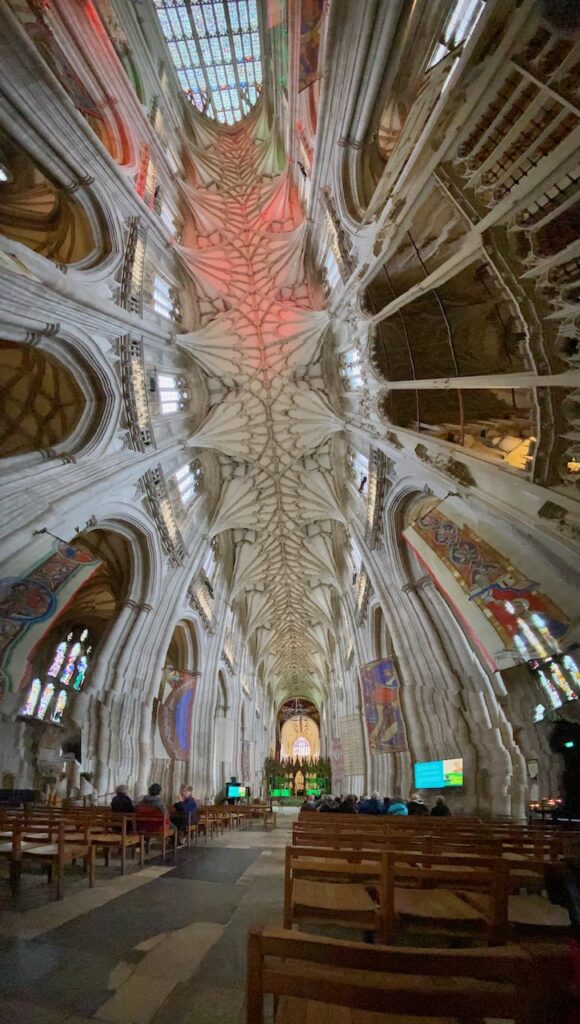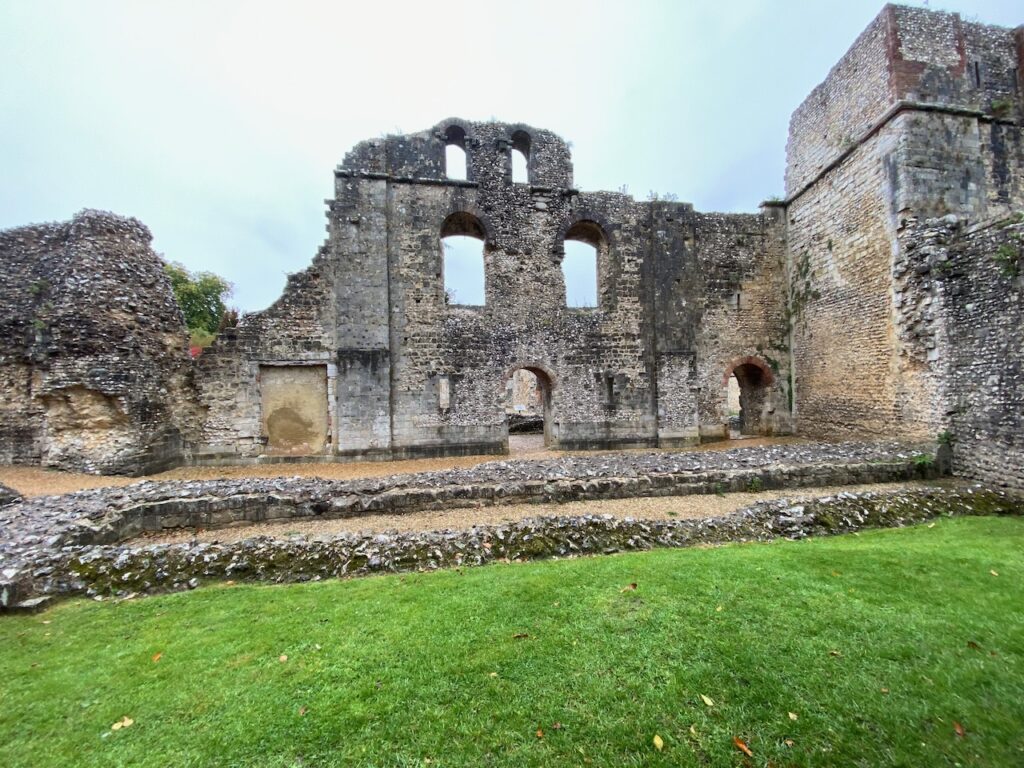
Part of Viking Ocean Cruise Trade Routes of the Middle Ages
Winchester Cathedral
You’re bringing me down
You stood and you watched as
My baby left town.
Do you remember the song Winchester Cathedral recorded in 1966 by the British group New Vaudeville Band? The song goes, “Winchester Cathedral, You’re bringing me down. You stood and you watched as my baby left town.”

We visited the famous Cathedral as an optional excursion during our Trade Routes of the Middle Ages Cruise with Viking Cruises. We started our half day excursion at the port city of Portsmouth, England and headed for Winchester in a driving rainstorm. As we traveled to this historical site on our comfortable modern bus, we got a glimpse of the English countryside. Our tour guide Anna told us that Winchester had always been a home for royalty and was now considered an expensive place to live.

Winchester is a city in the county of Hampshire, on the edge of England’s South Downs National Park. It’s known for this medieval Winchester Cathedral, with its 17th-century Morley Library, the Winchester Bible and a Norman crypt. The Cathedral is its primary attraction.

The cathedral and its history are impressive. Stretching 558 feet it is the world’s longest cathedral. We learned that its construction began in 1079 under orders from William the Conquerer. The area was home to several Saxon religious churches. But, William wanted to solidify his Norman rule and he felt that a cathedral built with Norman design would do that. Bishop Walekin, a close friend and relative of William was appointed the first Norman Bishop at Winchester. He and many of his successors supervised the construction and design modifications.
The cathedral is filled with coffins and crypts of numerous bishops, saints and important people. Saint Swithin is the most well known religious figure entombed here and the author Jane Austin is also buried here.
As we toured the Cathedral, Anna told us that in 1539 things changed as a result of the English reformation and break from the Catholic church. The monasteries were dissolved as were the use of small side chapels where priests could for a fee pray for someone to avoid purgatory.

The cathedral was a victim of the English civil war in the 1650’s. The parliamentary or anti royalist groups stormed the cathedral on several occasions. They destroyed one of the beautiful glass windows. They also opened the crypts of entombed Saxon nobles and scattered their bones.

Cracks Developed
Cracks began to develop in the floor of the cathedral in earl 1900. It was determined that the Normans had done a poor job of laying the foundation in 1079. They had used 15 inch layers of beech trees which had rotten. Further study showed that water was also seeing into the foundation further weakening it. Drastic measures were need to avert a total disaster resulting in the closing of the cathedral. Finally a specialist named William Walker was hired to fix the problem. He spent six years placing dry concrete bags in the water area of the foundation. The concrete eventually hardened and the problem was solved.
Surviving Ruins

The surviving ruins of Wolvesey were largely the creation of one man, Bishop Henry of Blois (1129-71), who built a palace befitting his immense wealth and powerful position.

When Blois became bishop of Winchester in 1129, the residence consisted of a large hali block (the ‘west hall’),which had been built in about I110 by the previous bishop, William Giffard(1107-29).Until his death 42 years later, Henry continually added new buildings. Starting with another hall block (the ‘east hall’), he thenadded a keep, a defensive tower and two gatehouses. Directly in front of you are the foundations of one of these gatehouses, which stood within this southern entrance courtyard

Although subsequent bishops carried out various repairs and alterations to the buildings, Henry’s palace survived virtually intact for the next 500 years. It is his work that comprises most of the ruins seen today.
Tourist Attraction
Westminster Cathedral remains a major tourist attraction with nearly 400,000 visitors a year. It was certainly impressive and raised many questions about the role religion played in the history of the time.
What we learned there was a commentary on that period of history. The fact that William The Conquer had the cathedral built was as much a symbol of power as an acknowledgement of the predominant religious beliefs then. If you are in southern England, it is worth a visit to Winchester Cathedral.
Article by Burt Davis and Dianne Davis
Photos by Dianne Davis or Burt Davis




Be the first to comment